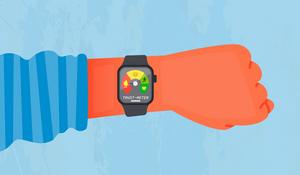Hi, friends! Welcome to Installer No. 82, your guide to the best and Verge-iest stuff in the world. (If you’re new here, welcome, hope you’re caught up on Andor, and also you can read all the old editions at the Installer homepage.)
Technology
The Backbone Pro is almost the perfect controller for all your gaming
Hi, friends! Welcome to Installer No. 82, your guide to the best and Verge-iest stuff in the world. (If you’re new here, welcome, hope you’re caught up on Andor, and also you can read all the old editions at the Installer homepage.) This week, I’ve been reading about AI prophets and ChatGPT cheaters and the […]

This week, I’ve been reading about AI prophets and ChatGPT cheaters and the lives of NFL prospects, watching the new season of Taskmaster and a whole bunch of Mulan, playing PGA Tour Pro Golf on my iPhone and the original Mario Golf on my Switch, finally getting into Barbarians at the Gate, and doing a lot of eBay shopping for vintage gadgets. For work, I swear.
I also have for you a great new gaming controller, a podcast about emojis, a new super-high-end fitness tracker, a whole bunch of GTA VI content, and much more. Fun, gadgety week this week! Let’s get into it.
(As always, the best part of Installer is your ideas and tips. What are you watching / reading / playing / listening to / learning on the harpsichord this week? What should everyone else be into right now, too? Tell me everything: installer@theverge.com. And if you know someone else who might enjoy Installer, forward it to them and tell them to subscribe here.)
- The Backbone Pro. I’ve had and loved a Backbone controller for a while — it’s a terrific gaming accessory for your phone. The new model is even more ambitious; in addition to your phone, it can also connect wirelessly to iPads, Steam Decks, smart TVs, and more. No Switch or Xbox or PS5, for annoying reasons, but still a great cross-device idea.
- “Emoji Law.” An instant classic of a 99 Percent Invisible episode, about how a thumbs-up emoji in response to a contract proposal turned into a huge lawsuit over what a thumbs-up emoji actually means. A wonky story in the absolute best way, and a great listen.
- The Microsoft Surface Pro 12. I remain slightly skeptical that any Windows on ARM device can be truly great, but it looks like Microsoft got the spec sheet right with this one. The Pro is thin and light, powerful enough, with good battery life, and starts at $800… I have high hopes for this one.
- Poker Face season two. This show never quite got its due, I assume mostly because it’s on Peacock and nobody really cares about Peacock. (Disclosure: Comcast, which owns Peacock, is a minority investor in Vox Media.) But it’s a terrific mystery show, and the second season is just as surprising and bizarre as the first.
- Amazon Kindle for iOS. This is mostly a PSA: thanks to the recent ruling against Apple, developers like Amazon can now include links to buy stuff on the web. Amazon’s one of the first I’ve seen to take advantage — you can just click to buy a book! What a world! Delta and other apps are also already changing how you pay for stuff, and there’s surely more to come soon.
- “Handhelds (and Games) I’m Playing Right Now.” A fun Retro Games Corp tour of a bunch of interesting and fun handheld consoles — including a couple I didn’t know about before — and some fun games to play on them. I have trouble keeping all the retro handheld stuff straight, and this video was super helpful.
- Whoop 5.0. Whoop has always been a little too much for me. It’s a great fitness tracker for, like, pro athletes, but it’s more than most people need. The new one, though, is smaller and longer-lasting and more focused on overall health tracking. It’s still a lot of metrics, though, and you’ll pay up to $359 a year to get all of them.
- “GTA 6 TRAILER 2 REACTION & BREAKDOWN.” Two full hours of frame-by-frame review of a two-minute trailer for a game that’s not coming out for a year, from a big name in GTA streaming, who spends half the stream just being blown away by the graphics? Yes, please. I watched the whole thing without even meaning to.
I’ve mentioned this before here, but I have a real weakness for notebooks. On some level this makes no sense: I type all day, I write by hand hardly ever, and my handwriting is horrific. And yet there’s nothing I love more than the look and feel of a really nice notebook. I’ve been a fan of the Sidekick Notepad from Cortex for a while, and was very excited to see the launch of the Sidekick Pocket this week. There are three flavors of the new mini notebook: one with lined paper, one with a dot grid, and one just for writing checklists. The correct answer is all three.
One half of the Cortex team is Myke Hurley, who you might also know as the cofounder of the Relay podcast network and the host of tech-focused shows like Connected and Upgrade. I’ve been a fan of Myke for a long time, and wanted to see how a guy who makes lovely notebooks thinks about his phone.
Here’s Myke’s homescreen, plus some info on the apps he uses and why:

The phone: iPhone 16 Pro in Desert Titanium. I am in the No Case Club with my iPhone (although I love my MagSafe Popsocket to help with grip), so I like to have a phone with as much color as Apple will give me.
The wallpaper: This is a photo of the wallpaper in The Beverly Hills Hotel, which I took while on holiday in LA last year. This wallpaper gives me joy, even though my friends REPEATEDLY tell me that it makes my homescreen too busy. But it’s my phone!
The apps: Apple Notes, ChatGPT, Citymapper, Mango Baby, Photos, Instagram, Messages, Readwise Reader, Todoist, Notion, Safari, Overcast, GameTrack, Owlet Dream, Kindle.
As you can see, I love widgets on my homescreen, and I use stacks quite a bit. So you see Carrot and Due there, for instance, but they are hiding widgets for Fantastical and Reminders, respectively.
I find myself using ChatGPT more and more to replace Google Search. Being able to ask follow-up questions about what I’m searching for is very powerful, and often helps me find what I want.
My wife and I recently had our first child, and we have been using Mango Baby to track all the important things you need to track for baby health. It’s made by a single developer, it looks great, and it supports all the new Apple technologies like interactive widgets and live activities.
I have recently taken all text-based social media off my phone, and am trying to do these things on work devices only, in an effort to be less distracted. So I have started saving articles to Readwise Reader. I really like the way the app looks and works — but I especially like its highlighting features.
I really love Widgetsmith’s photo widgets. The built-in widget from Apple is good, but you never know what it’s going to show you.
I also asked Myke to share a few things he’s into right now. Here’s what he sent back:
- The Studio on Apple TV Plus is my absolute favorite show right now. It’s an incredibly fun and entertaining show that’s also a technical masterpiece. Everything I see about how this show is made just makes me love and respect it more.
- Kinda Funny Games is a gaming-focused YouTube channel / podcast network that brings me so much joy. It’s an 11-person company based in San Francisco, and they produce multiple shows every day. The gang has such great camaraderie I feel like I am hanging out with friends when I tune in.
- If you’re not listening to The Rest is History, you should change that. It’s an incredible history podcast hosted by Tom Holland (not that one) and Dominic Sandbrook. They have a way of bringing history to life that I find so compelling. There are so many amazing series of episodes to go through, but I recommend the episodes on the Assassination of JFK as a good place to start.
Here’s what the Installer community is into this week. I want to know what you’re into right now as well! Email installer@theverge.com or message me on Signal — @davidpierce.11 — with your recommendations for anything and everything, and we’ll feature some of our favorites here every week. For even more great recommendations, check out the replies to this post on Threads and this post on Bluesky.
“I’ve started playing another daily word game called Raddle. It’s a word ladder where you have to get from one word (or phrase) to another, but instead of just changing one letter like in a traditional word ladder there are a series of clues like ‘replace the middle letter with a double letter to get a time of day.’ The catch is that the clues are in a random order so you need to figure out which clue applies right now.” — Kyle
“The Seat on Netflix, despite the very cringe WhatsApp sponsoring, is a fascinating watch of a prodigy kid still living with his parents who’s about to join one of the top F1 teams. What Drive to Survive could have been.” — Greg
“Just got done with Nexus: A Brief History of Information Networks from the Stone Age to AI, and enjoyed it.” — Hobie
“Pocket Casts launched transcripts finally! Only for Plus and Patron members, it looks like, but if I wasn’t already a Plus member, this would’ve instantly made me one. This will help my constant struggle of wanting to switch to Apple Podcasts significantly.” — Omesh
“After Omnivore shut down, I got stressed and started looking into self hosting. Struggled until I set up YunoHost to self host Wallabag and Miniflux on a Raspberry Pi.” — Ronin
“I’ve been playing Kero Kero Cowboy for Game Boy, which just got released after a successful Kickstarter. It has strong Kirby vibes and has been a blast so far.” — Justin
“I’m looking at the Alfred Field Guide from MacSparky, and trying to see if I can fit it into my budget this month. Been a Powerpack user for years, but I’ve never learned the ins and outs.” — Ben
“The Pitt on Max is the best new show I’ve seen this year.” — Yury
“I’ve basically sunk my week into Clair Obscur: Expedition 33. I don’t want to sound overly dramatic, but I think it’s the biggest jump in mature video game storytelling since The Witcher 3. Cyberpunk 2077 and Baldur’s Gate 3 improved on The Witcher, but CO feels like something entirely new.” — Laszlo
I’ve gotten a couple of emails in the last few weeks that all say basically the same thing: dude, you need to jailbreak your Kindle. The pitch makes a lot of sense! The Kindle is a lovely piece of hardware that is annoyingly tied to all of Amazon’s weird ideas about software and books.
I’ve spent some time this week on YouTube watching people jailbreak their e-readers — Dammit Jeff has a great explainer, as does Simon Feilder — and they all show that the Kindle can be a much more interesting and versatile device. Also, people really like KOReader. Amazon, of course, does not want you to do any of this; it already patched some of the jailbreak exploits, and I assume this cat-and-mouse game will continue forever. But I will be jailbreaking my Paperwhite as soon as I can, and I will report back.
Technology
Meta becomes the latest big tech company turning to nuclear power for AI needs
WASHINGTON — Meta has cut a 20-year deal to secure nuclear power to help meet surging demand for artificial intelligence and other computing needs at Facebook’s parent company. The investment with Meta will also expand the output of a Constellation Energy Illinois nuclear plant. The agreement announced Tuesday is just the latest in a string […]

WASHINGTON — Meta has cut a 20-year deal to secure nuclear power to help meet surging demand for artificial intelligence and other computing needs at Facebook’s parent company.
The investment with Meta will also expand the output of a Constellation Energy Illinois nuclear plant.
The agreement announced Tuesday is just the latest in a string of tech-nuclear partnerships as the use of AI expands. Financial details of the agreement were not disclosed.
Constellation’s Clinton Clean Energy Center was actually slated to close in 2017 after years of financial losses but was saved by legislation in Illinois establishing a zero-emission credit program to support the plant into 2027. The agreement deal takes effect in June of 2027, when the state’s taxpayer funded zero-emission credit program expires.
With the arrival of Meta, Clinton’s clean energy output will expand by 30 megawatts, preserve 1,100 local jobs and bring in $13.5 million in annual tax revenue, according to the companies. The plant currently powers the equivalent of about 800,000 U.S. homes.
“Securing clean, reliable energy is necessary to continue advancing our AI ambitions,” said Urvi Parekh, Meta’s head of global energy.
Surging investments in small nuclear reactors comes at a time when large tech companies are facing two major demands: a need to increase their energy supply for AI and data centers, among other needs, while also trying to meet their long-term goals to significantly cut greenhouse gas emissions.
Constellation, the owner of the shuttered Three Mile Island nuclear power plant, said in September that it planned to restart the reactor so tech giant Microsoft could secure power to supply its data centers. Three Mile Island, located on the Susquehanna River just outside Harrisburg, Pennsylvania, was the site of the nation’s worst commercial nuclear power accident in 1979.
Also last fall, Amazon said it was investing in small nuclear reactors, two days after a similar announcement by Google.
Additionally, Google announced last month that it was investing in three advanced nuclear energy projects with Elementl Power.
U.S. states have been positioning themselves to meet the tech industry’s power needs as policymakers consider expanding subsidies and gutting regulatory obstacles.
Last year, 25 states passed legislation to support advanced nuclear energy, and lawmakers this year have introduced over 200 bills supportive of nuclear energy, according to the trade association Nuclear Energy Institute.
Advanced reactor designs from competing firms are filling up the federal government’s regulatory pipeline as the industry touts them as a reliable, climate-friendly way to meet electricity demands from tech giants desperate to power their fast-growing artificial intelligence platforms.
Still, it’s unlikely the U.S. could quadruple its nuclear production within the next 25 years, like the White House wants. The United States lacks any next-generation reactors operating commercially and only two new large reactors have been built from scratch in nearly 50 years. Those two reactors, at a nuclear plant in Georgia, were completed years late and at least $17 billion over budget.
Amazon, Google and Microsoft also have been investing in solar and wind technologies, which make electricity without producing greenhouse gas emissions.
Shares of Constellation Energy Corp., based in Baltimore, were flat Tuesday.
Quality, in-depth journalism is essential to a healthy community. The Dispatch brings you the most complete reporting and insightful commentary in the Golden Triangle, but we need your help to continue our efforts. In the past week, our reporters have posted 45 articles to cdispatch.com. Please consider subscribing to our website for only $2.30 per week to help support local journalism and our community.
Technology
CertiCon, an HTEC Company, Honored With Supplier Award 2024 by Frequentis for Outstanding Performance and Sustainability – NORTHEAST
HTEC Group Inc. is a global AI-first provider of strategic, software and hardware embedded design and engineering services, specializing in Advanced Technologies, Financial Services, MedTech, Automotive, Telco, and Enterprise Software & Platforms. HTEC has a proven track record of helping Fortune 500 and hyper-growth companies solve complex engineering challenges, drive efficiency, reduce risks, and accelerate […]

HTEC Group Inc. is a global AI-first provider of strategic, software and hardware embedded design and engineering services, specializing in Advanced Technologies, Financial Services, MedTech, Automotive, Telco, and Enterprise Software & Platforms. HTEC has a proven track record of helping Fortune 500 and hyper-growth companies solve complex engineering challenges, drive efficiency, reduce risks, and accelerate time to market. HTEC prides itself on attracting top talent and has strategically chosen the locations of its 20+ excellence centers to enable this.
Technology
Study examines how well wearable tech tracks fitness metrics
image: Many people use wearable devices, such as Apple Watches, to track their fitness goals, but a UM study finds that the devices are better at tracking some types of data than others. The researchers advise that the devices provide helpful information to help track goals, but users should not rely on the data as […]

image:
Many people use wearable devices, such as Apple Watches, to track their fitness goals, but a UM study finds that the devices are better at tracking some types of data than others. The researchers advise that the devices provide helpful information to help track goals, but users should not rely on the data as totally accurate.
view more
Credit: Graphic by Jordan Thweatt/University Marketing and Communications
OXFORD, Miss. – Many Americans rely on their Apple Watches or similar devices each day to count their steps, track workouts, and measure how many calories they burn. But are those wearable devices accurate?
University of Mississippi professor Minsoo Kang and doctoral student Ju-Pil Choe are working to answer that question.
Kang, a professor of sport analytics, and Choe reviewed 56 studies that compared the Apple Watch to trusted reference tools in measuring energy burned, heart rate and step counts.
Data from the National Institutes of Health shows that wearable technology has become increasingly popular across all types of users, from elite athletes to the general population, whether active or sedentary. As early as 2015, about 1 in 8 Americans reported using a wearable activity monitor. By 2019, wearable tech had become the top fitness trend, and the market continues to expand.
“If people are using them to make decisions about their workouts or even medical conditions, the data should be accurate,” Choe said. “If the numbers are off, it could lead to confusion, overtraining or even miss health warnings.”
The Ole Miss researchers conducted a meta-analysis to evaluate how the device’s accuracy varied by age, health status, Apple Watch version and type of physical activity.
The findings showed that Apple Watches are generally accurate when measuring heart rate and step counts. The researchers reported mean absolute percent errors, a standard measure of accuracy, of 4.43% for heart rate and 8.17% for step counts, while the error for energy expenditure rose to 27.96%.
This inaccuracy was observed across all types of users and activities tested, including walking, running, cycling and mixed-intensity workouts.
This inaccuracy was observed across all types of users and activities tested, including walking, running, cycling and mixed-intensity workouts.
The results indicated that Apple Watches can be a good support tool, such as for tracking basic activity after surgery, but they should not replace clinical tools or medical judgment, Kang said.
“These devices are great for keeping track of habits and staying motivated,” he said. “But do not take every number as 100% truth, especially the calories.
“Think of it as a helpful guide, not a diagnostic tool. It is useful but not perfect.”
The researchers noted that newer models seem to be more accurate.
“While we cannot say every update is a big leap forward, there is a noticeable trend of gradual improvements over time,” Choe said. “It shows that Apple is refining the technology over time.”
Kang said he hopes this study will help consumers make informed choices about buying and using wearable devices and help manufacturers improve the technology people rely on daily.
“By showing where the weaknesses are, we can help developers get real feedback,” he said. “If they know what needs to be fixed, they can design better sensors or algorithms.
“Our findings can guide improvements and help make these devices more useful for both everyday users and health care providers.”
Journal
Physiological Measurement
Article Title
Apple watch accuracy in monitoring health metrics: a systematic review and meta-analysis
Disclaimer: AAAS and EurekAlert! are not responsible for the accuracy of news releases posted to EurekAlert! by contributing institutions or for the use of any information through the EurekAlert system.
Technology
Meta turns to nuclear power for AI needs | News, Sports, Jobs
WASHINGTON (AP) — Meta has cut a 20-year deal to secure nuclear power to help meet surging demand for artificial intelligence and other computing needs at Facebook’s parent company. The investment with Meta will also expand the output of a Constellation Energy Illinois nuclear plant. The agreement announced Tuesday is just the latest in a […]

WASHINGTON (AP) — Meta has cut a 20-year deal to secure nuclear power to help meet surging demand for artificial intelligence and other computing needs at Facebook’s parent company.
The investment with Meta will also expand the output of a Constellation Energy Illinois nuclear plant.
The agreement announced Tuesday is just the latest in a string of tech-nuclear partnerships as the use of AI expands. Financial details of the agreement were not disclosed.
Constellation’s Clinton Clean Energy Center was actually slated to close in 2017 after years of financial losses but was saved by legislation in Illinois establishing a zero-emission credit program to support the plant into 2027. The agreement deal takes effect in June of 2027, when the state’s taxpayer funded zero-emission credit program expires.
With the arrival of Meta, Clinton’s clean energy output will expand by 30 megawatts, preserve 1,100 local jobs and bring in $13.5 million in annual tax revenue, according to the companies. The plant currently powers the equivalent of about 800,000 U.S. homes. George Gross, professor of electrical and computer engineering at the University of Illinois. estimates that 30 additional megawatts would be enough to power a city with about 30,00 residents for one year.
“Securing clean, reliable energy is necessary to continue advancing our AI ambitions,” said Urvi Parekh, Meta’s head of global energy.
Surging investments in small nuclear reactors comes at a time when large tech companies are facing two major demands: a need to increase their energy supply for AI and data centers, among other needs, while also trying to meet their long-term goals to cut greenhouse gas emissions.
Technology
Future of ESPN’s MLB Rights
Morning Edition June 5, 2025 Rob Manfred told reporters, including FOS, that MLB hopes to decide on a new rights partner for rights currently held by ESPN before the All-Star Game. Here’s what we know. —Eric Fisher, David Rumsey, and Colin Salao Mark J. Rebilas-Imgan Images MLB is approaching an endgame on reselling national media […]

|
|---|
|
|
|---|
|
|
|---|
|
|
|---|
|
|
|---|
|
|---|
|
|---|
Technology
Catapult buys MIT spinout Perch for $28m — Capital Brief
The news: Sports technology company Catapult Group International has acquired athlete monitoring platform and Massachusetts Institute of Technology spinout Perch. The numbers: The US$18 million ($28 million) acquisition was completed on Wednesday, with US$3 million cash to be paid out of Catapult’s existing cash reserves at close. The remainder will be paid out in Catapult […]

The news: Sports technology company Catapult Group International has acquired athlete monitoring platform and Massachusetts Institute of Technology spinout Perch.
The numbers: The US$18 million ($28 million) acquisition was completed on Wednesday, with US$3 million cash to be paid out of Catapult’s existing cash reserves at close.
The remainder will be paid out in Catapult shares across four tranches.
Perch shareholders are also eligible for an earn-out of up to US$10 million in additional shares over the period June 2027 to May 2028 if growth milestones for annual contract value (ACV) are met.
Shares will be valued at the 30-day volume-weighted average price ending prior to the release of Catapult’s financial year 2025 results.
Perch, founded in 2016, has an annual contract value of about US$2.5 million and has trained its computer vision algorithm across 40,000 unique users.
The context: Perch’s uses 3D cameras combined with computer vision and AI to automate tracking of athlete strength training, aiming to deliver real-time feedback and saving time compared to manual data collection.
What they said: “By bringing our solutions together, we’re building a smarter, more connected athlete monitoring system — on the field, in the gym and beyond,” Catapult CEO and managing director Will Lopes said.
“The acquisition strengthens our Performance & Health vertical and accelerates our mission to deliver intuitive, end-to-end solutions for professional sports.
-

 College Sports2 weeks ago
College Sports2 weeks agoPortal Update – Basketball and Gymnastics Take Hits
-

 College Sports2 weeks ago
College Sports2 weeks agoPortal Update – Basketball and Gymnastics Take Hits
-

 Professional Sports2 weeks ago
Professional Sports2 weeks agoJon Jones answers UFC retirement speculation as fans accuse champion of 'holding the belt …
-

 NIL1 week ago
NIL1 week ago2025 NCAA Softball Tournament Bracket: Women’s College World Series bracket, schedule set
-

 Health2 weeks ago
Health2 weeks agoBYU women's basketball guard injures ACL twice
-

 Youtube2 weeks ago
Youtube2 weeks agoXavier Legette taught Marty Smith his signature celly
-

 High School Sports2 weeks ago
High School Sports2 weeks agoToday in the MHSAA
-

 Motorsports2 weeks ago
Motorsports2 weeks agoWhy IHOP Rode With Dale Earnhardt Jr. In Amazon NASCAR Debut
-

 College Sports2 weeks ago
College Sports2 weeks agoNCDC Commitment Profiles: Cyclones’ Martins Moving On to Saint Anselm College • USPHL
-

 College Sports2 weeks ago
College Sports2 weeks agoIU basketball recruiting









































